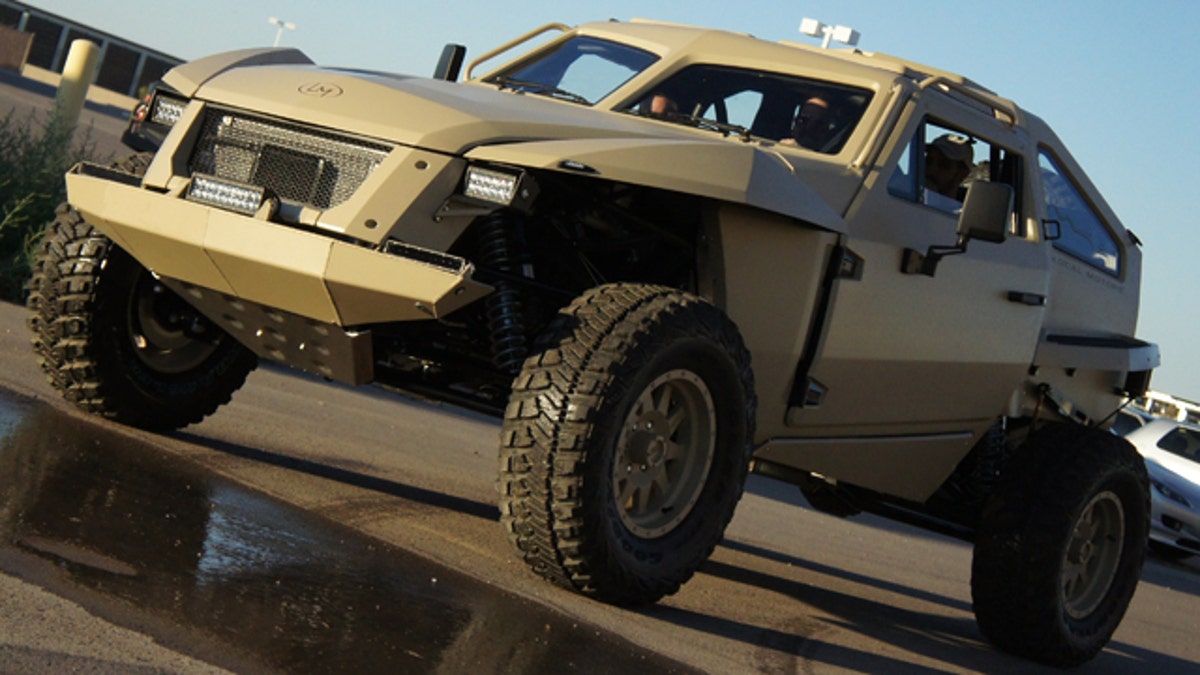
Flypmode (Local Motors)
Sharing is always good, but it’s even better when it can save lives.
The U.S. Army’s Rapid Equipping Force (REF) is charged with making America’s soldiers more effective and efficient by coming up with new ways to use off-the-shelf products on the battlefield and improving the performance of military-spec equipment based on real-world experience.
Through its network of liaison officers embedded with units around the world, it gathers information from the front lines, prototypes ideas, sends them into the field for testing, and makes recommendations to the Army’s acquisition departments for wider deployment of successful projects.
The system has led to countless innovations, and saved millions of dollars in development costs through the years, but now REF wants to know what it can achieve if every member of the Army has the opportunity to contribute to the process.
And it’s about to find out.
Today at the Washington Auto Show, the REF announced that it is teaming up with Local Motors, a pioneer in the area of crowd-sourced design, to build an online platform that will potentially let anyone in uniform contribute to ideas to improve the equipment they use every day.
Local Motors has a lot of experience in this area.
Founded in 2007 by Jay Rogers, a former Marine Infantry Company Commander and Iraq war veteran, it turned the idea of co-creation into a thriving car-building and design business where its community members submit ideas that are voted on and further modified by their peers, ultimately culminating in fully realized vehicles like the military Flypmode prototype and Rally Fighter. The Rally Fighter is a high-performance off-roader that combines custom parts with commercially available components like the engine from a Chevrolet Corvette and the taillights from a Honda Civic into a package that costs substantially less to put together than a ground-up creation.
The partnership with REF is aimed at honing anything in realm of the human-machine interface, which includes robotics, bomb detection and operational vehicles, in near-real time.
“They are the smartest guys out there,” says REF Director Colonel Peter Newell. “They know what the problems are. We just have to be there to observe what’s happening and provide them the platform where they can actually deliver the idea.”
Rogers says that while the current system works well, by removing reporting layers and putting troops in essentially direct contact with the REF and its contractors, the process could be sped up immeasurably and fed with the freshest information while the online community ensures that the best ideas rise to the top.
Additionally, the database could allow troops to quickly develop and disseminate solutions to pressing issues among units that are deployed in a common theater of operation.
Picture a mechanic at a remote forward operating base jury-rigging an new air-filter to deal with a local type of dust that’s causing problems with his unit’s HUMVEES. With the online system, he’ll be able to upload his design for other units experiencing the problem to copy, who can in turn offer their own suggestions to optimize it while the folks back at REF tap into this conversation and put it through a more formal engineering review.
Rogers hopes to be able to launch the system within the next six months, because there’s no time like the present, especially when lives are on the line.